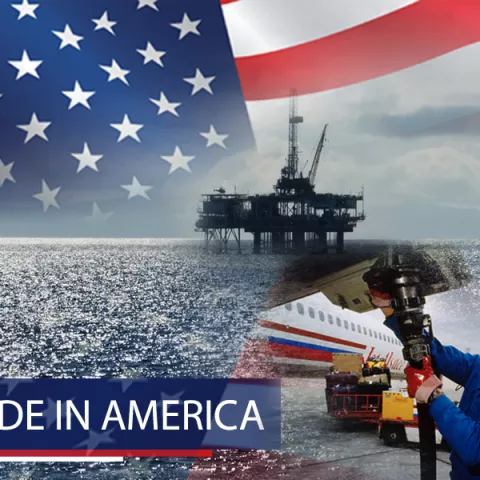
You are viewing ARCHIVED content published online before Jan. 20, 2025. Please note that this content is NOT UPDATED,
and links may not work. Additionally, any previously issued diversity, equity, inclusion or gender-related guidance on
this webpage should be considered rescinded. For current information, visit
News Items | Bureau of Safety and Environmental Enforcement.
NEW ORLEANS -- Energy companies working in the Gulf of Mexico produce about 1.7 million barrels of crude oil per day. It is transported to refineries along the Gulf Coast where it becomes a variety of fuels, petroleum products and petrochemicals that boost America’s economy. Gulf oil also contributes to the roughly $2.8 billion added to the U.S. Treasury every year from Outer Continental Shelf oil and gas production.
“National security, energy security and economic security are all tied to a robust offshore oil and gas industry,” said Scott Angelle, Bureau of Safety and Environmental Enforcement director. “With the OCS contributing one out of every six barrels of oil produced in the U.S., this Made in America energy is vital to meeting President Trump’s and Secretary Zinke’s goal of energy dominance.”
Oil produced from the Gulf of Mexico OCS range in type from the light, sweet crude that becomes gasoline or jet fuel to heavier more sour crude suitable for diesel and other fuels. The type of crude is generally defined by its density relative to water and the sulfur content. The density measurement is used to set commodity prices and to determine the preferred use. If the sulfur content is less than one percent, it is considered sweet.
While both medium sour crude and light sweet crude are produced from deepwater Gulf of Mexico, the more recent discoveries and projects such as Anadarko’s Lucius and LLOG Exploration’s Delta House produce the light, sweet crude.
This sweet crude is considered more valuable; it is safer to extract and transport, less corrosive, and easier to distill. According to the U.S. Energy Information Administration, each 42-gallon barrel of oil entering American refineries produces about 19 gallons of gasoline, 12 gallons of diesel fuel, four gallons of jet fuel, plus kerosene, residual fuel oil, road oil, asphalt, naphtha and lubricants.
The OCS produces enough oil to supply the annual needs of one out of every 10 Americans. It also supports more than 300,000 jobs nationwide with capacity for years to come.
In the first half of 2017, Gulf of Mexico oil production was at a high, especially in deepwater. The investments that support this record rate of production were made more than a decade ago.
“In considering deepwater production, I am reminded of the Chinese proverb, that one generation plants a tree, another enjoys the shade,” Angelle explained. “Now is the time for this generation of Americans to create a business climate worthy of investments in the Outer Continental Shelf so production from American energy won’t be reduced. In other words, let’s start planting trees.”
###
